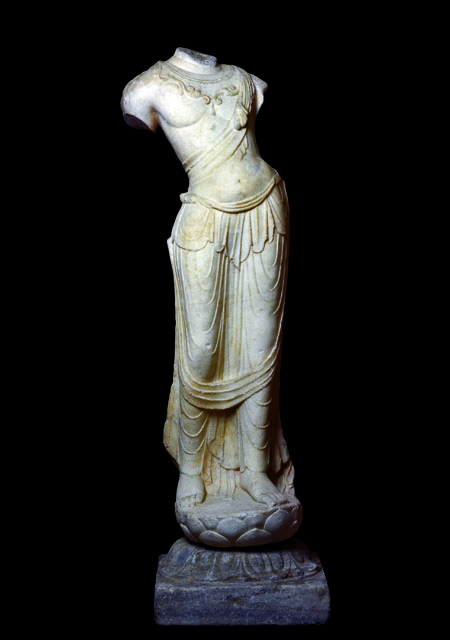“I have never squandered money on horses, yachts, automobiles or other foolish extravagances. A fondness for these porcelains is my only hobby – the only thing on which I’ve cared to spend money…this hobby while a costly one, is quiet and unostentatious and not sensational. I feel sure if I had the actual cash on hand, you would encourage rather than discourage my development of so educative and innocent an interest.”
So pleaded a young John D.Rockefeller Jr in a letter to his father, John D. Rockefeller, as he requested a loan of $200,000,000 to buy Chinese ceramics. The loan was granted.
The love affair with Asia and Asian art continued with JDR Jr’s children, especially JDR 3rd, David and Nelson Rockefeller, who all have collected Asian art, and whose children continue to do so.
If there’s something five generations of Rockefellers have been fascinated by – it is Asia. They were into Asian art and culture long before it became fashionable and certainly long before Asia became a major emerging global power.
Indeed, John D. Rockefeller 3rd in establishing the Asia Society in 1956, made culture central to this multidisciplinary organization because he believed art was an indispensable tool for understanding societies. The Rockefeller interest in Asia, however, goes way beyond art into education, commerce and philanthropy, and it’s a family that has had an impact in all these fields in countries from Japan and China to Indonesia and India.
 This year marks the 50th anniversary of the founding of the Asia Society by John D. Rockefeller 3rd and a highlight of the celebration is A Passion for Asia: The Rockefeller Family Collects, which runs from February 24 to September 3, 2006 at Asia Society in New York. It features 150 of the most stunning Asian artworks originally owned by family members and now held in public and private collections. A fascinating book, ‘A Passion for Asia: The Rockefeller Legacy’ includes essays by several family members about their personal connection to Asia.
This year marks the 50th anniversary of the founding of the Asia Society by John D. Rockefeller 3rd and a highlight of the celebration is A Passion for Asia: The Rockefeller Family Collects, which runs from February 24 to September 3, 2006 at Asia Society in New York. It features 150 of the most stunning Asian artworks originally owned by family members and now held in public and private collections. A fascinating book, ‘A Passion for Asia: The Rockefeller Legacy’ includes essays by several family members about their personal connection to Asia.
In this exhibition you see not only treasures from across Asia but also archival photographs which show the family’s connection with Asia. In one photo you see young John D. Rockefeller 3 rd, Nelson Rockefeller and Abby ‘Babs’ Rockefeller at a Meiji style teahouse – not in Japan – but at the Rockefeller family estate in Pocantico Hills, NY! This was way back in 1912. In fact many of the gardens in their homes were influenced by Asian landscape design, long before any of them visited the Far East.
The collecting started way back in 1901, when John D. Rockefeller Jr. and his wife Abby started acquiring Asian art and later visited East Asia in 1921. The couple had six children – Babs, John D. 3 rd, Nelson, Laurence, Winthrop and David – and they all grew up surrounded with arts from Asia and developed a real respect and interest for the diverse cultures. The family collected wonderful sculptures, paintings, screens, ceramics and textiles that became a part of their daily lives. They often ate on the Chinese and Japanese porcelain dishes, enjoyed the Buddhist sculptures in their landscaped Japanese gardens and experienced the peace and tranquility of Abby’s Buddha Rooms in their homes in New York and Maine, where, drawn by the spirituality of these sculptures, she even burned incense.
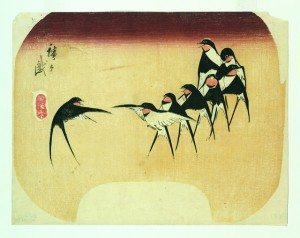 It was JDR 3 and his wife Blanchette Hooker Rockefeller who visited South and Southeast Asia and built the South Asian art collection, including many superb pieces from the Chola period. They were guided by the noted scholar Sherman E. Lee in their acquisitions of art. The Mr. and Mrs. John D. Rockefeller 3rd Collection which was donated to Asia Society is one of the notable collections of Asian art, with over 258 pieces, including masterpieces like an 8 th century sandstone sculpture of Ganesha from Uttar Pradesh. Auspicious and endearing, it stands on a lotus pedestal, has a crown and ten arms and welcomes visitors to the Asia Society. The collection also has a spectacular Krishna dancing on Kaliya, and this 11 th century piece is an incredible feat of bronze casting.
It was JDR 3 and his wife Blanchette Hooker Rockefeller who visited South and Southeast Asia and built the South Asian art collection, including many superb pieces from the Chola period. They were guided by the noted scholar Sherman E. Lee in their acquisitions of art. The Mr. and Mrs. John D. Rockefeller 3rd Collection which was donated to Asia Society is one of the notable collections of Asian art, with over 258 pieces, including masterpieces like an 8 th century sandstone sculpture of Ganesha from Uttar Pradesh. Auspicious and endearing, it stands on a lotus pedestal, has a crown and ten arms and welcomes visitors to the Asia Society. The collection also has a spectacular Krishna dancing on Kaliya, and this 11 th century piece is an incredible feat of bronze casting.
The exhibition has been co-curated by Dr. Vishakha N. Desai, the President of Asia Society and Dr. Adriana Proser. As Proser explains, “The Rockefellers were not content to display the works in their collections simply as isolated objects; they very carefully created environments that would enhance and illuminate the cultures from which they came. The Rockefeller children learnt from a young age that art was an important expression of the human spirit and the magnificence of many cultures.”
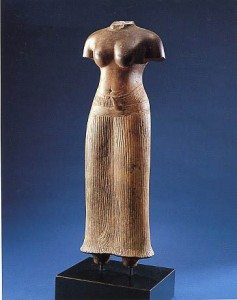 A gala banquet at the Waldorf Astoria in New York for 1200 guests honored the legacy of the Rockefellers and their contributions to America’s relations with Asia. The honorees at the glittering event were David Rockefeller and John D. Rockefeller IV, and the guest list had such noted names as Richard Holbrook, Henry Kissinger, many other Rockefeller family members as well as movers and shakers from Asian countries and the US. Indeed, the Rockefeller commitment to Asia and Asia Society continues: there are at least three Rockefellers on the board of trustees for Asia Society, including the youngest trustee, Charles, who is the grandson of John D. Rockefeller 3 rd.
A gala banquet at the Waldorf Astoria in New York for 1200 guests honored the legacy of the Rockefellers and their contributions to America’s relations with Asia. The honorees at the glittering event were David Rockefeller and John D. Rockefeller IV, and the guest list had such noted names as Richard Holbrook, Henry Kissinger, many other Rockefeller family members as well as movers and shakers from Asian countries and the US. Indeed, the Rockefeller commitment to Asia and Asia Society continues: there are at least three Rockefellers on the board of trustees for Asia Society, including the youngest trustee, Charles, who is the grandson of John D. Rockefeller 3 rd.
Talking about the Passion for Asia art exhibition, Desai noted, “Each of these pieces really tells a story about this family’s deep connection to Asia going back some five generations. Neither Abby Aldrich Rockefeller nor her son John D. Rockefeller 3rd saw Asia as an exotic destination. Instead they envisioned a three-dimensional Asia combining culture, commerce and current affairs. That vision linking us to Asian societies, leaders and institutions, is right at the very heart of the Asia Society today as it has been for 50 years.”
To celebrate the Rockefeller family’s deep interest in and commitment to Asia, several programs and events have been planned in Asia Society’s centers in the US and different parts of Asia. A major highlight is One Way or Another: Asian American Art Now, which is a group show dedicated to contemporary Asian American art, showcasing the work of Asian artists born in America.
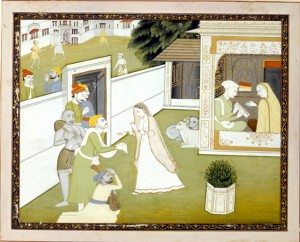 Indeed, Asia Society through its seminars, conferences, and art exhibits has always presented the complexities of Asia in a very accessible way to Americans, making a far-way continent very close. Now with Asia’s new importance on the world stage, its role is all the more important in connecting people and nations. It’s a catalyst where leaders and thinkers and ordinary people come together to create understanding across borders.
Indeed, Asia Society through its seminars, conferences, and art exhibits has always presented the complexities of Asia in a very accessible way to Americans, making a far-way continent very close. Now with Asia’s new importance on the world stage, its role is all the more important in connecting people and nations. It’s a catalyst where leaders and thinkers and ordinary people come together to create understanding across borders.
It is fitting then that in this 50th anniversary year, Asia Society’s new center is being established right in the heart of Mumbai. The center was inaugurated by Prime Minister Manmohan Singh during the 16 th Asian Corporate Conference organized by Asia Society in Mumbai.. Other important events planned for this anniversary year are the Williamsburg Conference in April, which will assemble policy, NGO and private sector leaders from Asia and the US, while the Asia Pacific Summit on Education will be held in May-June in Beijing, China, to discuss how to prepare students for a globalized world.
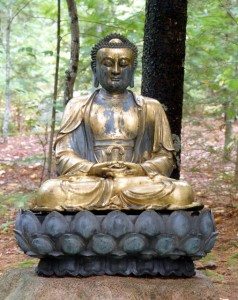 And what better way to succeed in this complex new world than through embracing the arts and cultures of its different people? Nothing draws people closer than beautiful and spiritual treasures, the masterpieces that celebrate the uniqueness of each culture. Art is a language that everyone understands and the Rockefellers were prescient in embracing that knowledge to bring the east and west closer together.
And what better way to succeed in this complex new world than through embracing the arts and cultures of its different people? Nothing draws people closer than beautiful and spiritual treasures, the masterpieces that celebrate the uniqueness of each culture. Art is a language that everyone understands and the Rockefellers were prescient in embracing that knowledge to bring the east and west closer together.
© Lavina Melwani
ASIA ON MY MIND
Asia is just around the corner with Asia Society in New York and its centers around the US and Asia.
Three detailed websites provide cutting-edge information about Asia, be it art appreciation, business opportunities or authentic Asian recipes. Click on to:
Text © Lavina Melwani
Photo captions and credits
Bodhisattva
China, Hebei province
Tang period (618–906), first half of the 8th century
Marble
70 1/2 x 16 x 18 in. (179.1 x 40.6 x 45.7 cm)
Collection of the National Trust for Historic Preservation, Nelson A. Rockefeller bequest, Kykuit, NT 79.29.318
Photograph by John Bigelow Taylor
Andō Hiroshige (Japanese, 1797–1858)
Dancing Swallows
Japan
Edo period (1615–1868), possibly early 1840s
Wood-block print: ink on paper
8 9/10 x 11 1/2 in. (22.7 x 29.2 cm)
Rhode Island School of Design, Museum of Art, Abby Aldrich Rockefeller Collection, 34.333
Photograph courtesy of Museum of Art, Rhode Island School of Design
Female Figure
Cambodia
Angkor period (802–1431), early 11th century
Sandstone (Baphuon style)
38 in. (96.5 cm)
Asia Society, New York: Mr. and Mrs. John D. Rockefeller 3rd Collection, 1979.65
Photograph by Susumu Wakisaka, Idemitsu Museum of Arts, Tokyo
Jaipur artist
A Lady Receiving Musicians at her House
India, Pahari
Circa 1830
Gouache with gold on paper (Kangra style)
Page 8 7/16 x 10 7/16 in. (21.4 x 26.5 cm)
David and Peggy Rockefeller Collection
Photograph by David Robinson
Seated Amitabha Buddha
China
Ming period (1368–1644), late 15th–mid-16th century
56 x 44 in. (142.2 x 111.8 cm)
Gilt bronze
Abby Aldrich Rockefeller Garden
Photograph by Malcolm Varon

